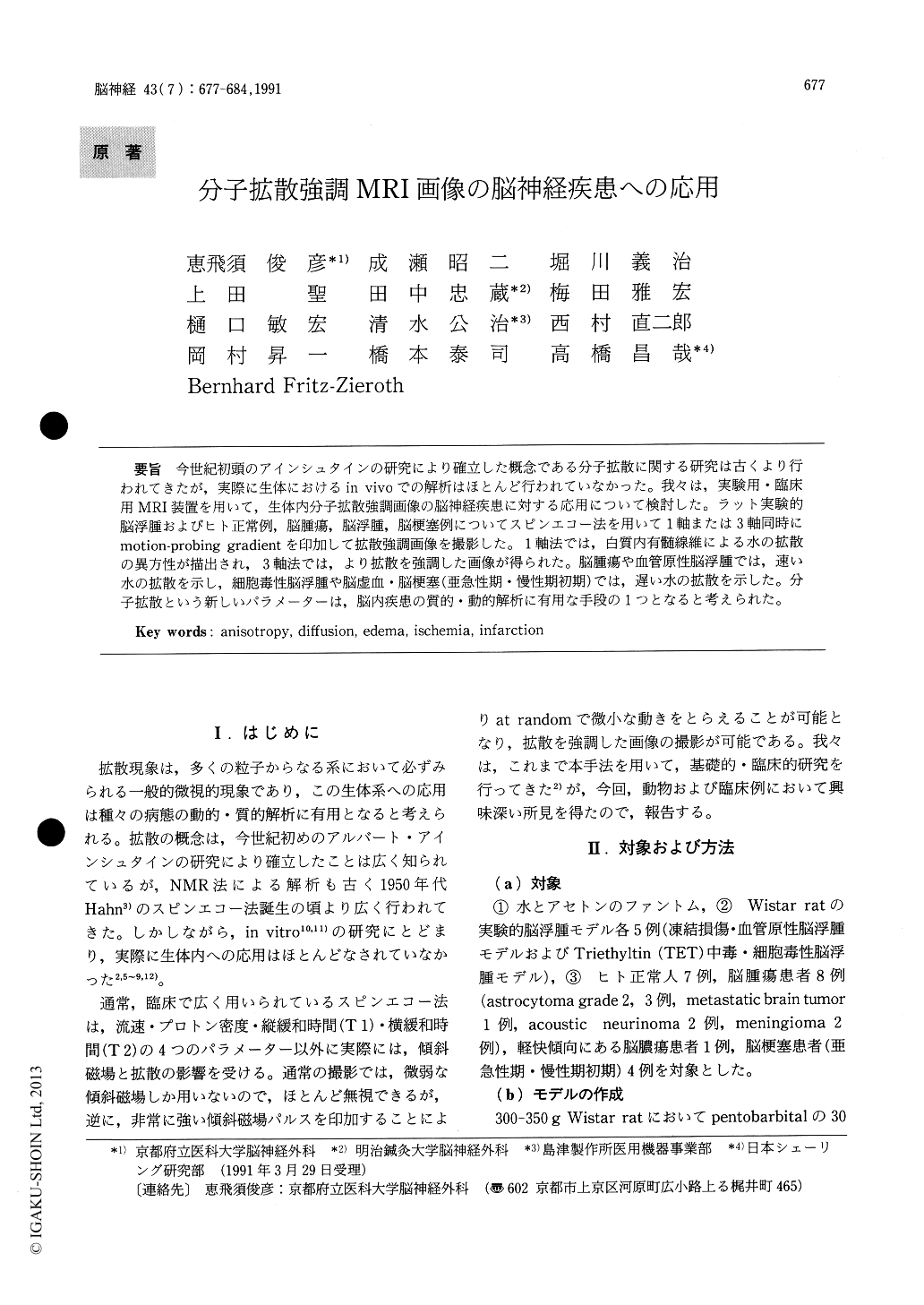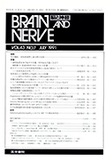Japanese
English
- 有料閲覧
- Abstract 文献概要
- 1ページ目 Look Inside
今世紀初頭のアインシュタインの研究により確立した概念である分子拡散に関する研究は古くより行われてきたが,実際に生体におけるin vivoでの解析はほとんど行われていなかった。我々は,実験用・臨床用MRI装置を用いて,生体内分子拡散強調画像の脳神経疾患に対する応用について検討した。ラット実験的脳浮腫およびヒト正常例,脳腫瘍,脳浮腫,脳梗塞例についてスピンエコー法を用いて1軸または3軸同時にmotion-probing gradientを印加して拡散強調画像を撮影した。1軸法では,白質内有髄線維による水の拡散の異方性が描出され,3軸法では,より拡散を強調した画像が得られた。脳腫瘍や血管原性脳浮腫では,速い水の拡散を示し,細胞毒性脳浮腫や脳虚血・脳梗塞(亜急性期・慢性期初期)では,遅い水の拡散を示した。分子拡散という新しいパラメーターは,脳内疾患の質的・動的解析に有用な手段の1つとなると考えられた。
We have developed a magnetic resonance (MR) spin echo method to obtain diffusion weighted imag-ing using motion-probing gradient (MPG) pulses in one or three orthogonal directions before and after a 180 degree pulse. Phantom models containing water and acetone, normal volunteers and patients with brain tumors, brain edema and infarction were examined. Experimental models of brain edema including triethyltin intoxication and cold injuries were also examined in Wistar rats. MRI was perfor-med at a 1.0-T clinical machine or a 4.7-T experi-mental machine using spin echo pulse sequences with or without additional MPGs on one or three orthogonal axes.
The one direction method was useful to define diffusion anisotropy of myelinated axonal fibers in white matter. Faster diffusion was detected in the white matter parallel to the direction of MPGs. On the other hand, slower diffusion was detected per-pendicular to the direction of MPGs because the myelin sheath restricted water diffusion.
The three orthogonal gradients method was use-ful to demonstrate the difference in the diffusion coefficients in various diseases due to its larger total gradient strength. The clear distinction between the cytotoxic edema, which revealed slower diffusion, and the vasogenic edema, which revealed faster diffusion, was demonstrated in the experimental models using diffusion weighted image. In the clini-cal cases, faster diffusion was demonstrated in the brain tumor and perifocal vasogenic edema, whichwas in agreement with the results in the experimen-tal models of rats. Brain tumors such as low grade astroytoma with microcysts and perifocal vasogenic edema have very wide extracellular space. It is considered that water diffusion in the extracellular space is not restricted so tightly as in the intracel-lular space with many intracellular organs. On the other hand, slower diffusion was demonstrated in the cerebral ischemia and infarction. Intracellular edema may have a influence on slower diffusion, andmoreover, in consideration of Einstein's equation, lower tissue temperature may also influence on slower diffusion. The changes in edema can also detected by examining diffusion of water molecules. Resolving edema revealed medium speed diffusion which was neither especially fast nor very slow.
New clinical information obtainable with this method on molecular diffusion will prove to be useful in various clinical studies.

Copyright © 1991, Igaku-Shoin Ltd. All rights reserved.


